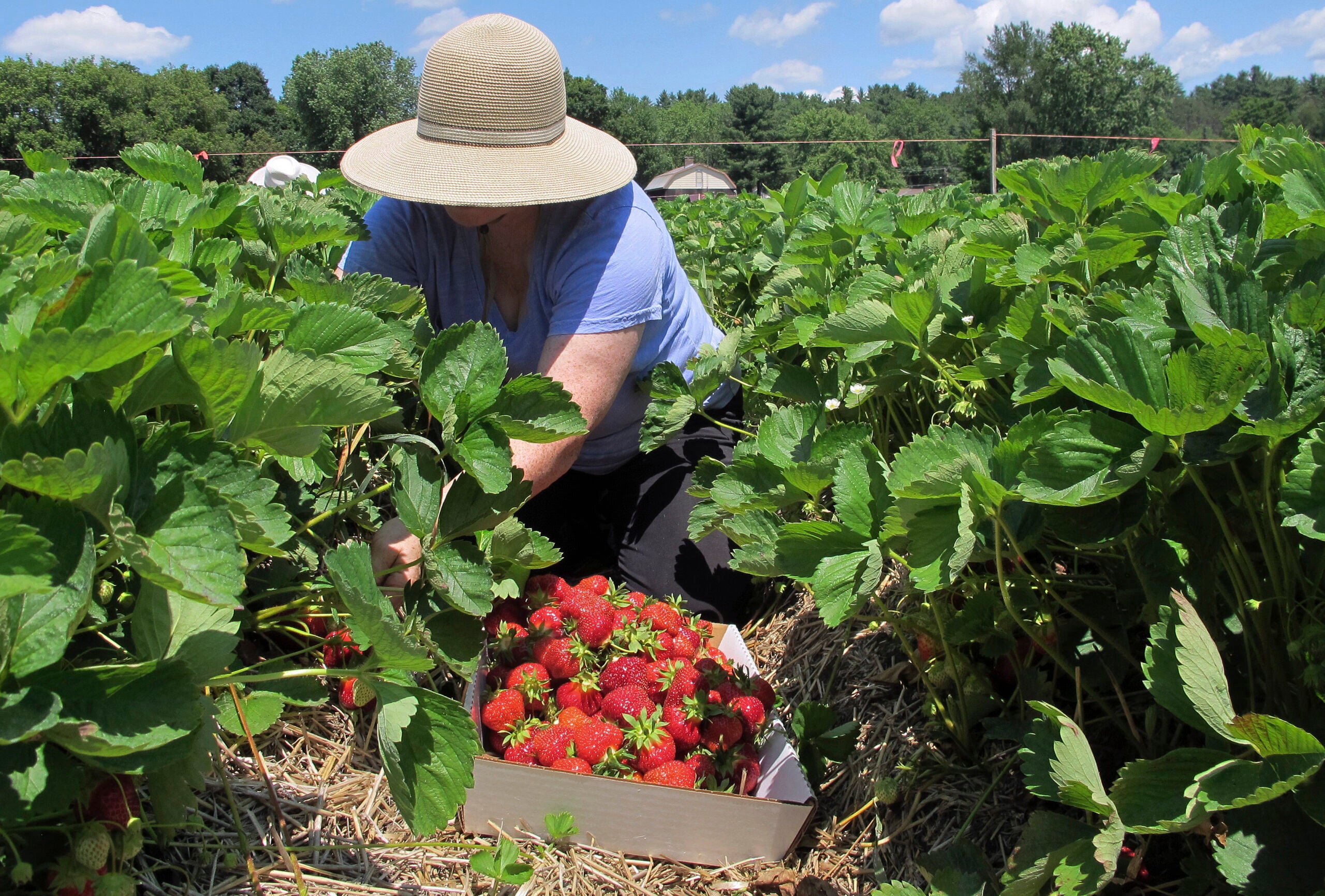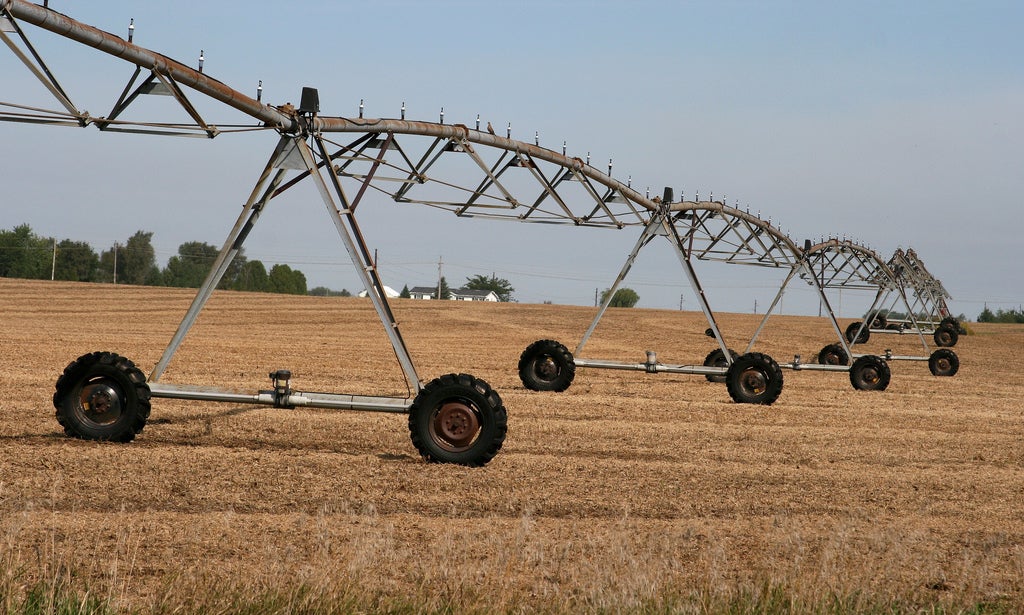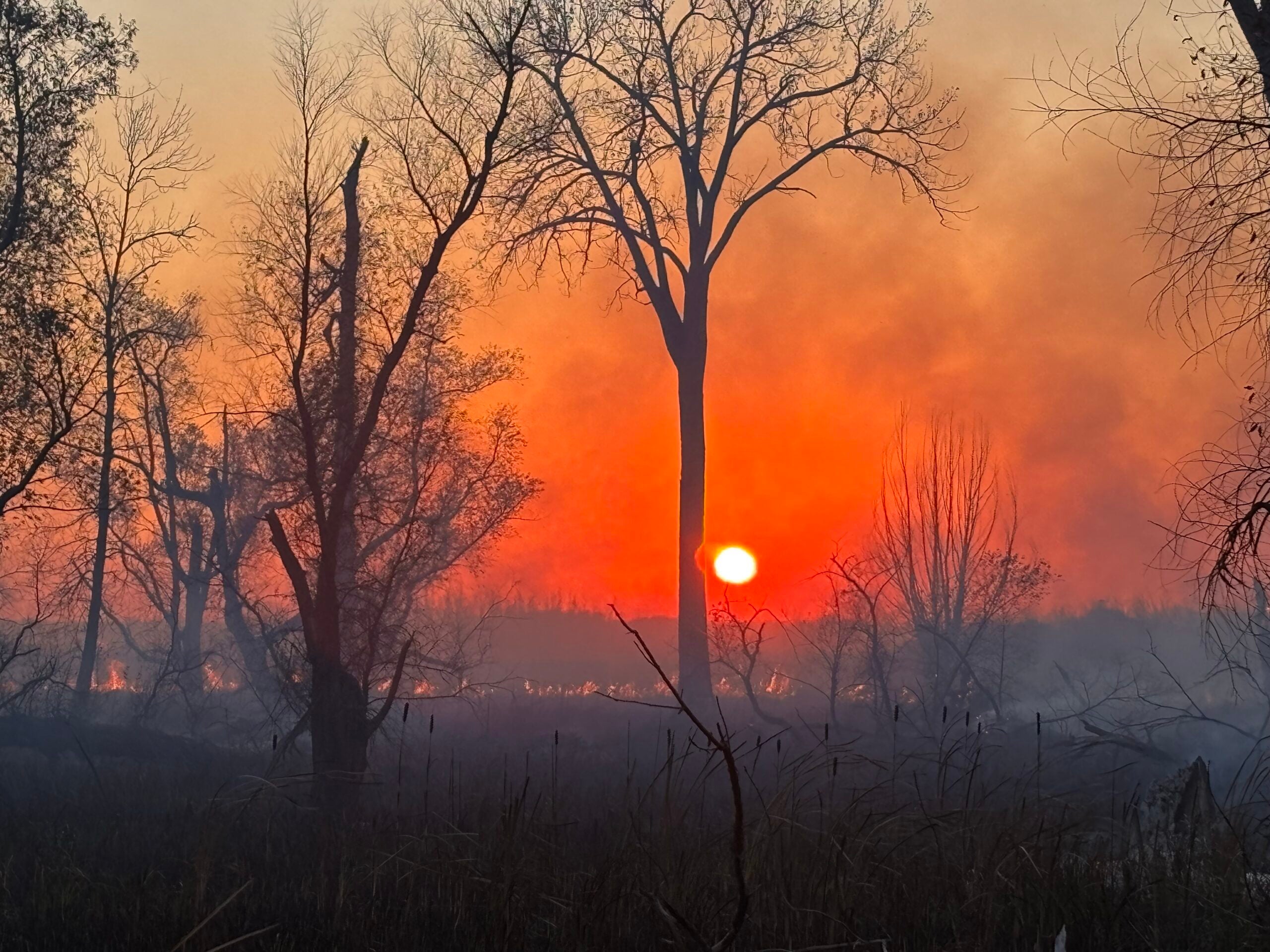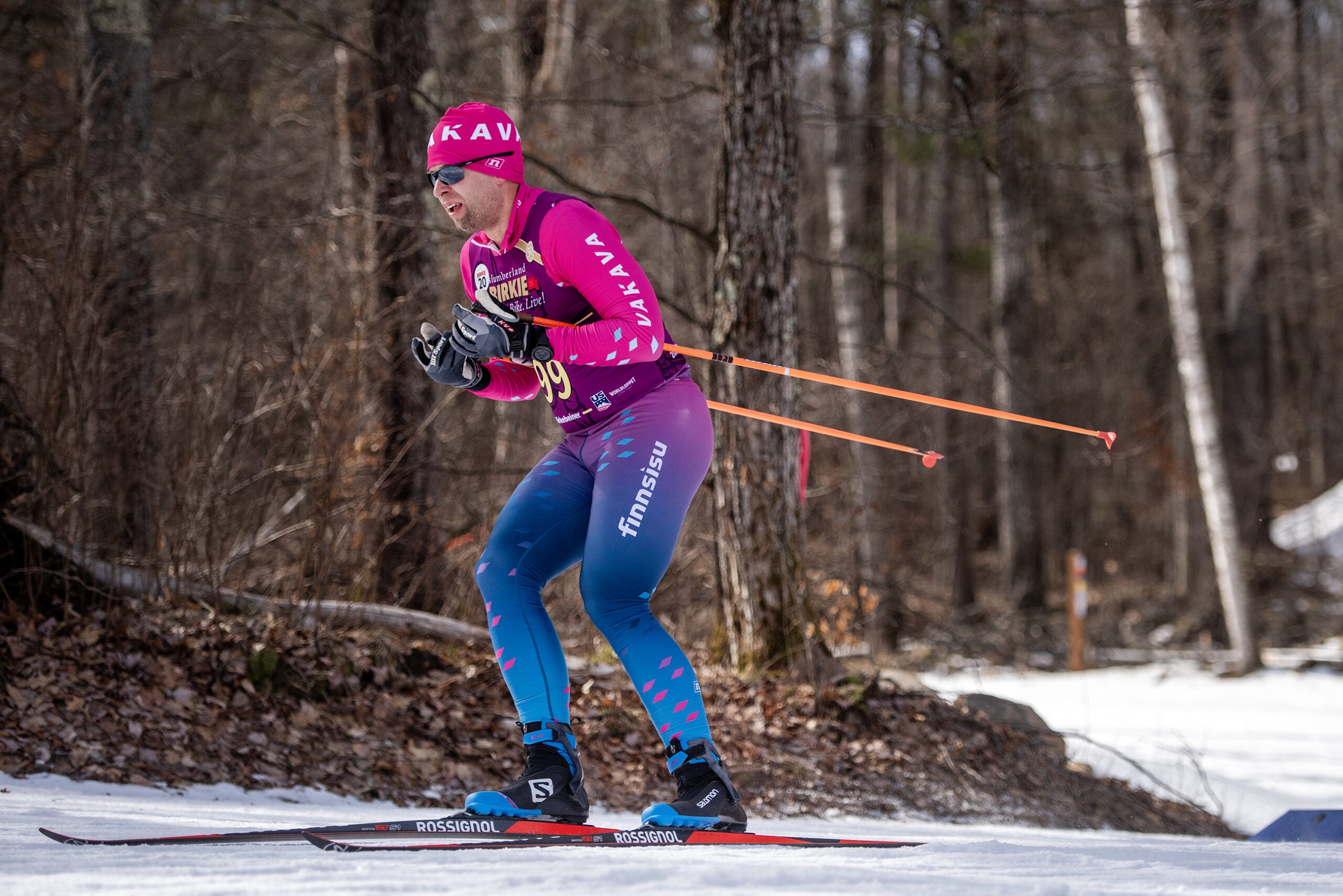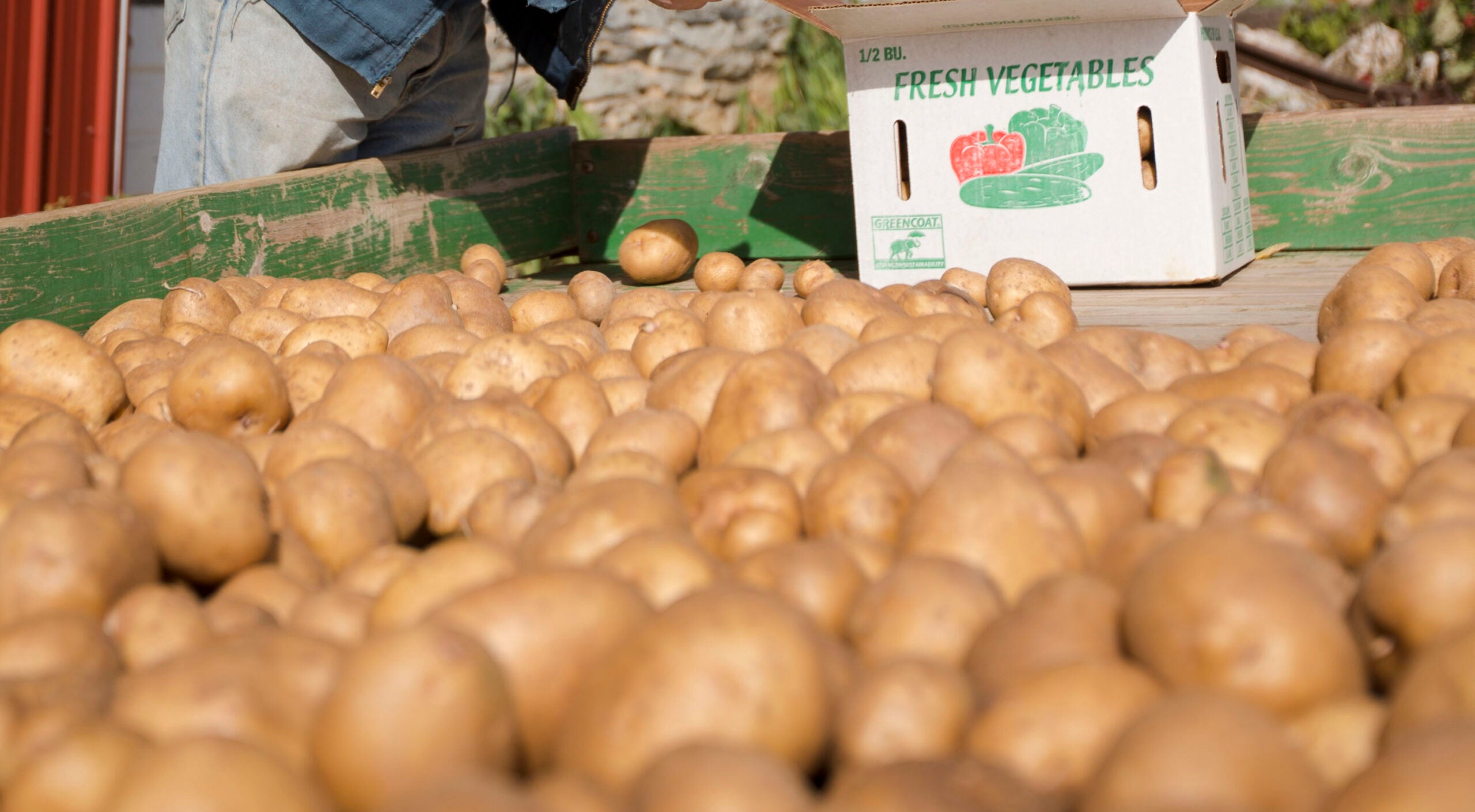Some growers say they’ve been increasingly forced to turn to irrigation to avoid stress on fruit and vegetable crops as the state faces drought conditions.
The U.S. Drought Monitor’s latest data shows more than 90 percent of the state is abnormally dry. About half of Wisconsin is experiencing moderate drought conditions, including parts of northwestern Wisconsin and roughly the southern half of the state.
Lindsey Baris said her father-in-law started Rising Sun Farm and Orchard in River Falls with the hope that he wouldn’t have to irrigate crops after farming under dry conditions in Washington state. Baris, who co-owns the farm with her husband Ryan Browne, said they never watered anything when she moved there 10 years ago.
Stay informed on the latest news
Sign up for WPR’s email newsletter.
“And over the past five years, it’s gotten harder and harder and harder to do that,” Baris said. “Then, we started having severe droughts three years ago, and so we found that we could not do it in that method anymore.”
Baris said they started digging water lines all over the farm where they grow 35 different types of vegetables, including carrots, broccoli and beets. The farm’s 160 apple trees have been largely unaffected, but she said they’ve set up several sprinkler systems to irrigate fields because they can’t rely on rain anymore.
Andrew Zwald, farm manager at White Pine Berry Farm in River Falls, said it’s a similar situation on their 120-acre farm that mainly grows strawberries, raspberries and blueberries along with red and black currants.
“With the drought, the irrigation has really been running nonstop,” Zwald said. “We use a drip-line irrigation tape. We are constantly rotating now where it’s at.”
While dry spells often happen in the summer, he said they’ve been running a lot more this spring.
Adam Hartman is a meteorologist with the National Oceanic and Atmospheric Administration’s Climate Prediction Center. Hartman said Wisconsin has seen a shortfall of anywhere from 2 to 6 inches of rain, and much of that has happened within the last 30 days.
The Upper Midwest, including Wisconsin, has seen above normal evapotranspiration rates. In other words, there’s been high evaporation of water from the soils and vegetation, as well as lakes and streams. He said that’s combined with temperatures that have ranged anywhere from 2 to 6 degrees Fahrenheit above normal for much of the state, worsening dry conditions.
“That’s been the case, not just for Wisconsin, but also across a large portion of the Corn Belt and Midwest as well, even into Michigan,” Hartman said.
Specialty crops like fruits tend to be more reliant on irrigation than row crops, according to Amaya Atucha, a fruit crop specialist for the University of Wisconsin-Madison’s Division of Extension. As strawberries are harvested around this time, Atucha said not having enough water may mean the fruit dries up easily in the field or doesn’t last as long after picking. If there’s a lot of heat, normally red and lush strawberries can get sunburned and look more like leather.
She said that represents more extreme conditions, which growers haven’t seen yet this year. While they have a good grasp on monitoring soil conditions, Atucha said they’ve seen episodes of drier weather in the last 10 years.
“We’ve seen that if we don’t have an irrigation system, if we don’t have a way of providing water in these kinds of situations, that we see them more and more often happening,” Atucha said.
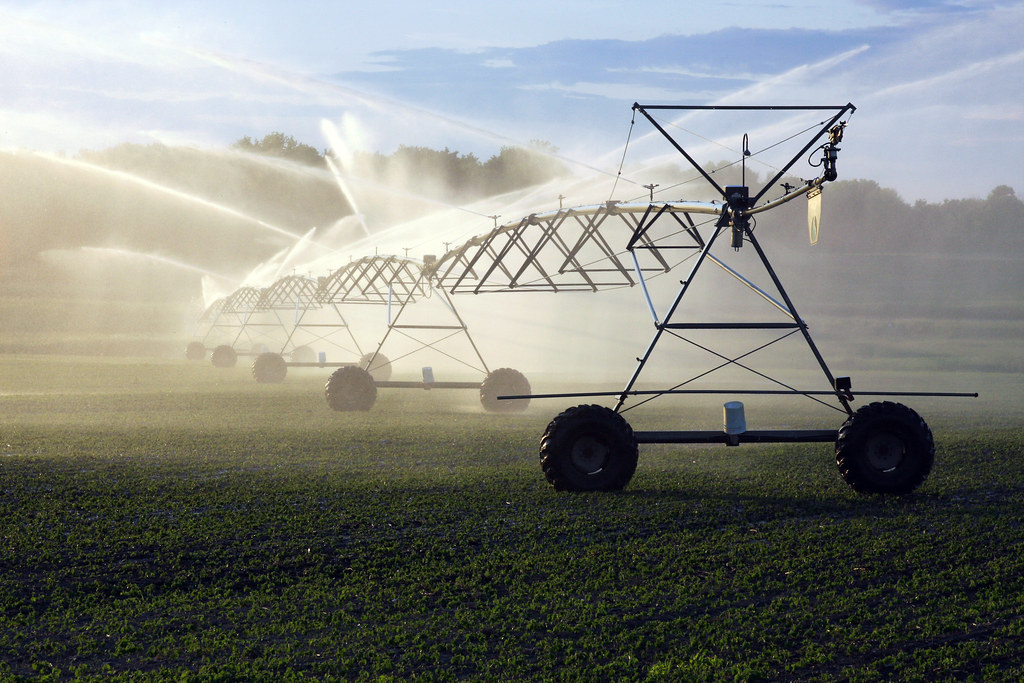
The reason is that drier conditions have a long-term effect on fruit crops because many of the flowers that will be present next year are starting to form now. Atucha said that means growers will invest in irrigation systems as they’ve seen more inconsistent patterns of precipitation where too much rainfall is followed by periods when there’s not enough.
While it’s uncertain how drought will affect the Midwest going forward, scientists project such patterns may be likely due to warming temperatures driven by climate change.
A 2018 report from a United Nations panel of scientists found soil moisture will likely shift from extreme amounts in the spring as a result of more rain to not enough in the summer across the region due to warmer weather. For commodity crops like corn, that could spell yield losses of up to 25 percent. As temperatures warm, too much rain mixed with drought will likely reduce the quality of fruit and vegetable crops sold at farmers markets.
Wisconsin hasn’t seen a clear trend of more drought conditions, according to Steve Vavrus, director of the Wisconsin State Climatology Office and a climate scientist with UW-Madison.
“In fact, if you look at the past 20 years or so since 2000, we had more drought episodes in the first half of that period than the last half,” Vavrus said.
Most of the last decade has been wetter, including some of the wettest years on record. Even so, Wisconsin saw a memorable drought in 2012 that caused some lakes and streams to dry up, along with a drought in 2021.
Most recent data from the Wisconsin Department of Natural Resources shows about 1.8 trillion gallons of water was withdrawn in 2021, most of which was needed for power generation. In 2021, withdrawals for agricultural irrigation were the third-largest in the last decade with only 2012 and 2013 surpassing the 80.9 billion gallons withdrawn.
“In 2012, we saw an extreme situation, and that went into 2013, as well, where we saw a large number of high capacity well applications. We haven’t seen that happen yet,” said Adam Freihoefer, the DNR’s water use section program manager. “That doesn’t mean it can’t happen. We’re kind of on a precipice with the drought. If it stays dry, we could end up in that situation, especially in the agricultural sector that needs that water for crops.”
In 2012, the drought caused an enormous increase in groundwater pumping from agriculture, including from counties across the state’s Central Sands region of central Wisconsin. That’s the state’s biggest production area for potato growers, according to Tamas Houlihan, executive director of the Wisconsin Potato and Vegetable Growers Association.
Wisconsin is third in the nation for potato production, and Houlihan said growers produce around 2.5 billion pounds of potatoes or roughly 25 million hundredweight each year. He said more than 95 percent of the state’s crop of more than 65,000 acres is irrigated.
“Over the years, the growers have added irrigation systems to virtually all their fields, and they’re able to keep water on the crop, even during times of drought through the use of high capacity wells and center pivot irrigation systems,” Houlihan said.
In 2021, a report released by the Wisconsin Department of Natural Resources found hundreds of the Central Sands region’s more than 3,000 high capacity wells that can pump more than 100,000 gallons a day were significantly lowering water levels in lakes. While drought and pumping can worsen conditions, Houlihan said water quantity isn’t as much of a concern now as water quality. Even so, he said growers are pumping heavily during dry conditions.
Vavrus said the lack of rainfall this month is very significant since June is normally the wettest month in Wisconsin. He said long-term trends for summer rainfall are hard to predict since climate models don’t agree on whether the season will be wetter or drier in Wisconsin in the future. However, the state is expected to see rains in heavier doses, and the Midwest is likely to see more rapid onsets of drought.
“So more typical of these flash droughts that we’ve seen this year and in 2012 and in 2021. They came on very quickly,” Vavrus said. “This year was really strange in the sense that we had such a wet period from January through April.”
Vavrus said it was the wettest start to the year on record for Wisconsin, which was followed by the state’s fourth-driest May on record. As drier conditions are continuing in June, he said Wisconsin has lucked out with the wetter start to the year in terms of crop conditions, noting they’re surprisingly good amid drier weather.
In the coming days, the region is slightly leaning toward warmer than normal temperatures and above normal rainfall, but NOAA’s Hartman said that could also go the other way. Within the next two weeks, the region is expected to continue to see hotter than normal weather with near normal rainfall.
Even under those conditions, Hartman said conditions will likely remain the same or possibly worsen without rainfall.
Wisconsin Public Radio, © Copyright 2025, Board of Regents of the University of Wisconsin System and Wisconsin Educational Communications Board.
